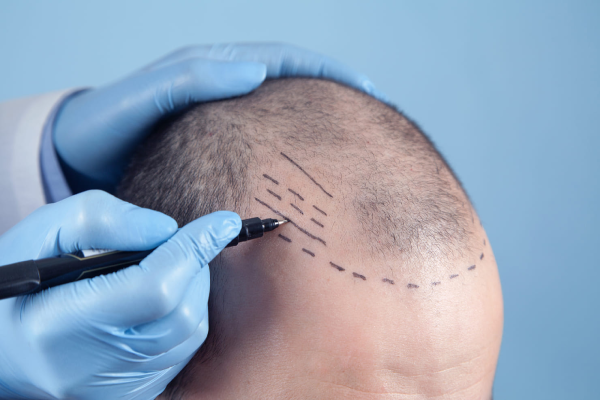An unexpected and unwelcome part of life, hair loss can be caused by a myriad of both environmental and genetic reasons. Whether it’s physical stress, anemia, heredity, or lack of protein in your diet that resulted in a sparser scalp, you may be faced with the question: what can I do about my baldness?
Thanks to recent advances in technology, hair loss can be slowed or completely stopped. The first hair transplant procedure was conducted in 1952 by a New York Dermatologist named Dr. Norman Orentreich. According to the American Hair Loss Association®, Orentreich is the person credited with discovering that the hair from the back and the sides of a man’s scalp is for the most part resistant to balding. And although the discovery was groundbreaking, the results early adopters achieved were nothing to write home about; patients were often left with unnatural looking, “pluggy” hairlines that made many weary of the procedure.
In the 1990s, micro-grafting was introduced, paving the way for Follicular Unit Transplantation (FUT) and Follicular Unit Extraction (FUE) – two methods commonly employed today. Unlike earlier procedures, both are highly precise and use smaller implants for a more uniform, natural look on balding spots. To understand them, you must first understand the anatomy of hair itself. The shaft is the portion of a strand of hair that we see on top of the head, while the follicle lives beneath the surface – growing in small bundles, or “follicular units”.
Both Follicular Unit Transplantation and Follicular Unit Extraction involve the transplantation of healthy hairs from one portion of the head to another; however, there are many differences between the two techniques.
The less invasive of the two procedures, FUE involves removing each individual follicular unit from the scalp. Utilizing miniscule circular punches, rather than cutting and suturing – the post-surgery scars attributed to FUE are nearly nonexistent. However, because FUE can be a very labor-intensive process, it’s usually reserved for those with minimal to moderate hair loss. The recovery period for this process tends to be minimal. According to a study done by the National Institutes of Health, FUE has become one of the most widely-accepted hair treatments across the western world.
According to the International Society of Hair Restoration Surgery, strip harvesting, or FUT, involves your physician removing strips of hair-bearing scalp and placing them in sparser areas of the head. While timid patients may lean toward FUE – due to the procedure’s track record of minimal scarring and less likelihood for pain, FUT almost always yields the greatest amount of hair when all is said and done. Plus, because new hair can grow through operative scars, it will eventually be concealed anyway. For those not wanting to break the bank, FUT tends to be the more cost effective of the two procedures. In fact, the ISHRS insists that while both techniques have their benefits, FUT provides the highest cost-benefit ratio.
The point is: it’s always best to consider the pros and cons of every technique before deciding on one. If you’re suffering from bothersome pattern baldness, call the specialists at Iorio Plastic Surgery & Medspa today. They’ll discuss your hair transplant options and answer any questions, so you’ll be able to make an educated decision on which to choose. Request an appointment online or call 732-780-9191 for our Colts Neck, NJ office, or 732-458-7400 for the Brick, NJ location.


